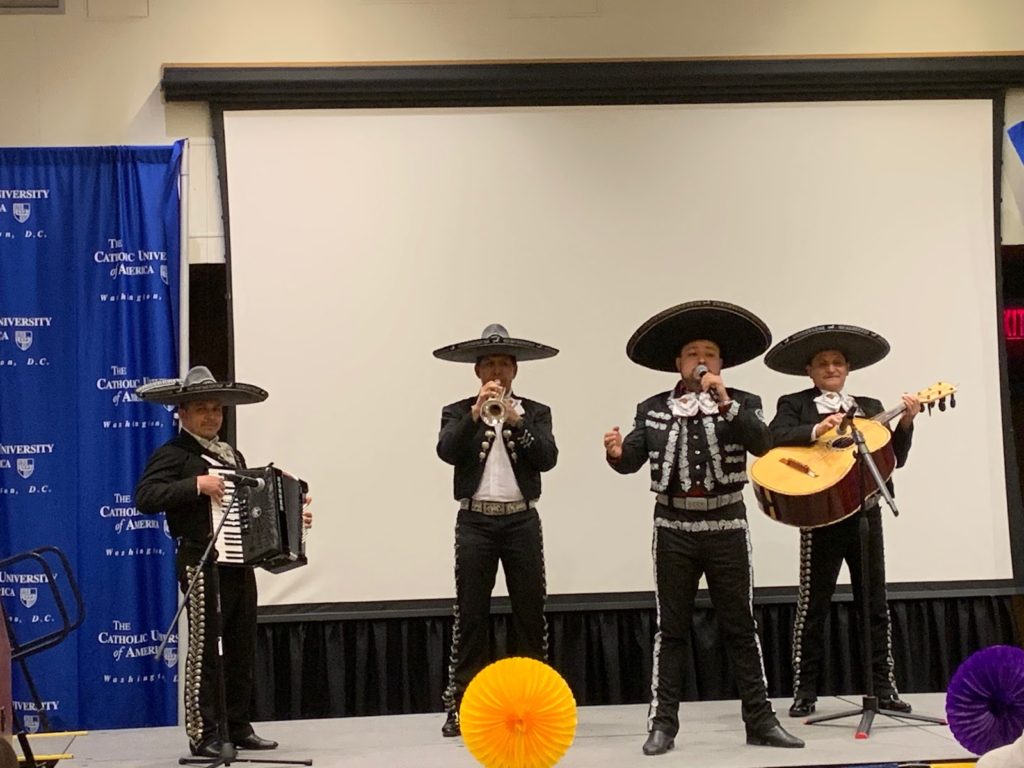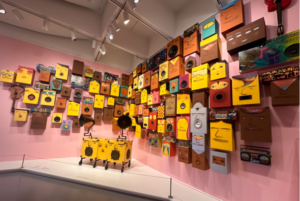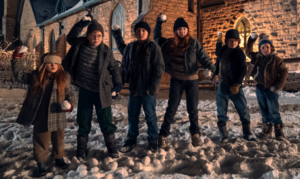Bringing the Sounds and Flavors of Latin America to Catholic University

A Mariachi band "Mariachi Águila" performed for CUA students on Tuesday.
By Katarina Ivancik
The Center of Cultural Engagement hosted an event which allowed students of all cultural backgrounds to engage in the music and cuisine of Latin America.
The director of the Center of Cultural Engagement, Javier W. Bustamante, described the center as an office that provides support to student of color on campus as well as providing programming and intercultural activities and events that educate the wider community on issues of diversity. The center’s most recent even, Rhythms of Latin America, was held in Great Room B of the Pryzybyla center on March 26, 2019.
The room was decorated with traditional Mexican papel picados, paper banners that have patterns cut out, similar to paper snowflakes. Attendees enjoyed the excellent Salvadoran cuisine that was offered, which included pupusas, corn tortillas stuffed with either cheese, pork, or beans; as well as the traditional Quesadilla Salvadorena, a dessert that can be compared to a sweet pound cake; and horchata, a sweet and spicy milk based drink popular in many Hispanic cultures. After the attendees had settled in with their food the event began with a local Guatemalan band called “Marimba Linda Xelajú” led by the musically talented, Giron family, of which one of the members, Robert Giron, is a student at the university.
The main instrument of the band was the marimba and there were always at least three people playing it. Other instruments included a bass guitar, drum, and, for one song, a wooden train whistle. The music itself was solely instrumental, but deeply rhythmic. It had an infectious quality that made it difficult for audience members to stay still while listening. Each song had its own distinctions, but overall the melodies had a similar pattern of repetition with some slight variations. One of the most impressive features of this band as well as the others was that the music was completely memorized.
Following this delightful performance was a demonstration from Catholic’s Latin Dance Club Pasión de SOL. This group is a subset of SOL, the Student Organization of Latinos. They performed a traditional Dominican Republic dance called the Merengue, a style of ballroom dancing that originated in the Dominican Republic. The choreography varies slightly between performances, but it is characterized by its fast tempo and unusual drag step included in the foot work.
“When the dance club coordinator told us about the event I was really excited to show people how to dance and what it’s like to dance to Latin American music,” said Robert Giron an accounting major.
After the dance performance a Mariachi group called “Mariachi Águila” performed. They had the traditional line up of instruments and wore the iconic suits and sombreros. Unlike the other bands the Mariachi band took song requests from the audience. A highlight of the evening was the lead vocalist’s compelling performance of “Malagueña” which is a traditional Mariachi song that requires refined vocal techniques. Their performance was the longest of the evening but easily the most well received.
“The mariachi band was probably like my favorite part of the whole thing,” said Maya Escobar, the Student Assistant Intercultural Coordinator.
After the Mariachi band finished a good portion of the audience begin to filter out and missed the engaging stylings of “Grupo Etnia” an Andean band. Their performance as well as the event was concluded with a rendition of a more well-known song that originated in Puerto Rico but topped American charts and broke records back in 2016, “Despacito.” The remaining audience members were able to enjoy singing along to this final number regardless of whether not they were fluent in Spanish.
The turnout was impressive for a weekday event; a total of approximately fifty people attended. Jerry Santiago, one of the student dancers, commented lively and welcoming atmosphere of the event.
“I’m really excited about activities like this they show off the diversity in CUA and just shows the student body that we have people from around the world who are part of the CUA community and it just shows that universal part that Catholic part of CUA,” said Santiago.





